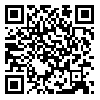BibTeX | RIS | EndNote | Medlars | ProCite | Reference Manager | RefWorks
Send citation to:
URL: http://ptj.uswr.ac.ir/article-1-296-en.html
2- Department of Physical Education, Borujerd Branch, Islamic Azad University, Borujerd, Iran.
3- Department of Sport Biomechanics, Faculty of Sport Sciences, Bu-Ali Sina University, Hamedan, Iran.
Purpose: The current study aimed at evaluating the effect of 5-toed shoes on electromyographic activity of leg muscles during the stance phase of running.
Methods: The current semi-experimental study recorded the electromyographic activity of tibialis anterior, soleus, gastrocnemius lateralis, and medialis muscles of 15 healthy male students (mean age: 24.5±3.4 years, mean height: 177.6±5.8 cm, and mean weight: 75.7±8.9 kg) during the stance phase of running in barefoot and shod (5-toed shoes) conditions. Paired sample t test was used for statistical analysis with SPSS19.
Results: In shod running, electromyographic activity of tibialis anterior during loading response phase (P=0.001) and electromyographic activity of soleus (P=0.002) and medial gastrocnemius (P=0.004) during propulsion phase were significantly higher, compared with the barefoot running; there was no significant difference in gastrocnemius lateralis muscle between both conditions (P˃0.05).
Conclusion: According to the current study findings, using 5-toed shoes could increase electromyographic activity of leg muscles during the stance phase of running.
Received: 2017/01/7 | Accepted: 2017/06/10 | Published: 2017/08/6
| Rights and permissions | |
 |
This work is licensed under a Creative Commons Attribution-NonCommercial 4.0 International License. |





